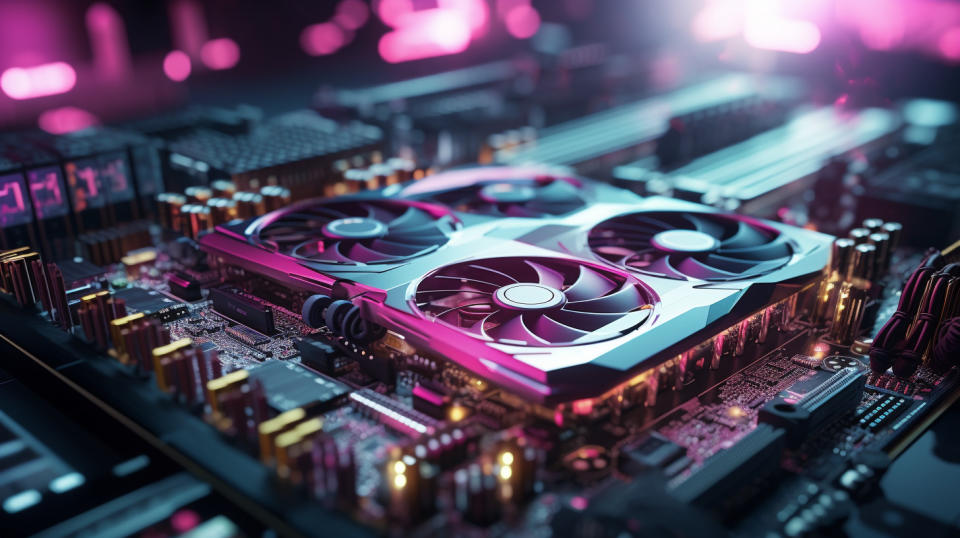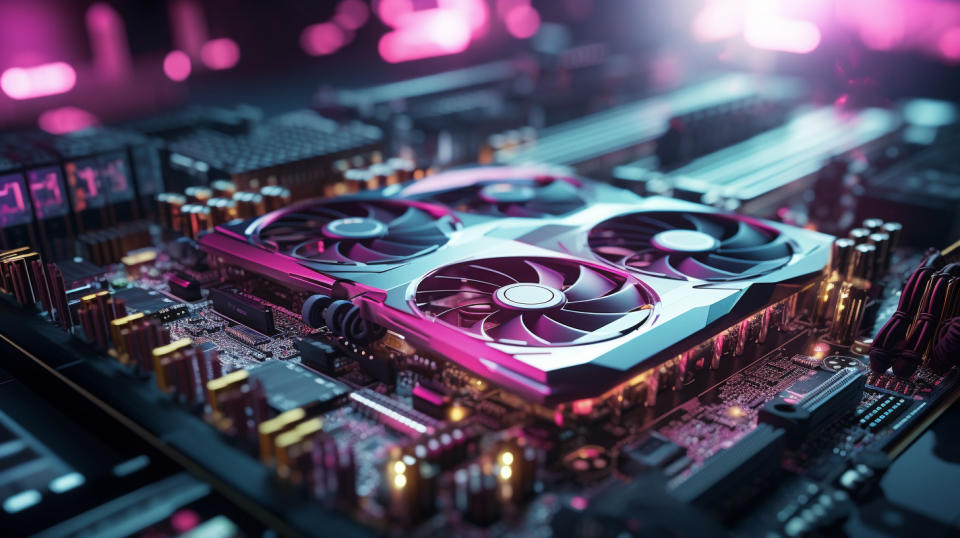We recently compiled a list of the 10 Best Magic Formula Stocks For The Rest Of 2024. In this article, we are going to take a look at where NVIDIA Corporation (NASDAQ:NVDA) stands against the other magic formula stocks.
One of the best known investment strategies on Wall Street, and one that’s also followed by investing greats the like of Warren Buffett of Berkshire Hathaway and Seth Klarman of Baupost Group is value investing. Another fund manager who has delivered fantastic returns through a value based approach is Joel Greenblatt. Greenblatt currently runs the hedge fund Gotham Asset Management, a fund that he set up in 2008 after moving forward from his previous fund called Gotham Capital.
Greenblatt is among the fund managers that have consistently delivered double digit percentage returns during their career on Wall Street. His previous firm, Gotham Capital, had an amazing run between 1985 and 1994. During this time period, the firm delivered a net return of 34%. This was particularly impressive, as 1985 was the year in which Gotham Capital was founded. On an annualized basis, the fund’s returns were even stronger, since during the same period, Greenblatt’s fund delivered 50% in returns.
The hallmark of a value investing strategy, as you’ll understand if you study Warren Buffett’s investment strategy in detail, is patience. This also applies to Greenblatt, who typically waits for at least a couple of years after making an investment to reap the returns. But while patience might be a virtue, on Wall Street, it’s the returns that matter. On this front, Greenblatt hasn’t disappointed, as his fund’s blazing run in the 1980s wasn’t its only one. After setting up Gotham Asset Management in 2008, the value investor managed multiple funds. Two of these were the Gotham Absolute Return (AR) fund and the Gotham Neutral fund. Among these, the AR fund was set up in 2012, and between then and 2018, its returns sat at 58.6%.
However, while these returns are impressive, this period was filled with ups and downs for the investment vehicle. For instance, 2013 was one of the best years for this fund as it posted 29.82% in returns. These gains were trimmed down to 9.31% in 2014. While these weren’t as strong as the previous year’s performance, they were nevertheless in the green. This is important since the next year wasn’t great by any account, since in 2015, the AR fund ended up with -10.25%. 2016 was somewhat turbulent for American stock markets since the Brexit vote in the UK, slowing Chinese GDP growth, and a commodities slump led to US and global stocks dipping between the end of 2015 and the first half of 2016. Between June 2015 and late February 2016, the blue chip Dow index had lost roughly 9% and the broader NASDAQ had bled a much higher 11%.
The next year would see Greenblatt bounce back. In 2016, the fund delivered 7.97% in returns and accelerated its performance later on through posting 10.03% in gains. During these same years, i.e., in 2014, the Gotham Neutral fund’s annualized returns had sat at 6.83%.
Since the onset of the coronavirus pandemic in late 2019, the stock market has been operating in a changed environment. The pandemic’s immediate aftermath saw major stock indexes crash by 30%+, which then led to the Federal Reserve reducing rates to near zero levels. The subsequent low cost of capital, the boom in demand for consumer technology products, and the rise in retail investing then saw markets soar. During this time period, i.e., the bottom in March 2020 and the peak of December 2021, Greenblatt’s AR fund was up by 55% while the flagship S&P index gained 103%. This might make you think that perhaps the investor, who calls his investment approach a ‘Magic Formula’ had lost its magic.
But you’d be wrong. The magic of the Magic Formula was visible during the next phase of the stock market. This was marked by the Federal Reserve’s rapid interest rate tightening cycle that came in response to soaring inflation. Between December 2021 and October 2023, inflation continued to rise, as the interest rates took their sweet time to make a mark. This meant that the flagship S&P was down by 13.6% from 2021 close to the end of October 2023.
However, during the same period, the AR fund had gained 3.41%. A short strategy had helped Greenblatt, it seems, as the AR fund advertises itself as being 50% to 60% net long. Gotham’s pure play long fund, which is 100% long, led the S&P in losses during this time period as it had lost 15.52% during the same period and a stronger 27% from its peak in November start. However, the magic was visible between the March bottom and the November 2021 peak as during this period the 100% long fund had gained 97% to nearly match the flagship index.
Before we head to our list of the best Magic Formula Stocks, it’s also important to take a brief look at what this investment technique entails. Greenblatt’s strategy is based on two metrics, the return on capital employed (ROCE) and the earnings yield. In a simple implementation, stocks are ranked according to these metrics, and the top stocks are bought and held for the long term. A specialty implementation is what Gotham calls its Gotham Yield. According to the fund, this is a proprietary technique that assesses a firm’s “pre-tax cash flow, return on capital, and enterprise value.”
Our Methodology
To make our list of the best magic formula stocks to buy, we ranked the stocks present in Gotham Asset Management’s Q2 2024 SEC filings by their dollar value and picked out the most valuable holdings.
For these stocks, we also mentioned the number of hedge fund investors. Why are we interested in the stocks that hedge funds pile into? The reason is simple: our research has shown that we can outperform the market by imitating the top stock picks of the best hedge funds. Our quarterly newsletter’s strategy selects 14 small-cap and large-cap stocks every quarter and has returned 275% since May 2014, beating its benchmark by 150 percentage points (see more details here).

A close-up of a colorful high-end graphics card being plugged in to a gaming computer.
NVIDIA Corporation (NASDAQ:NVDA)
Number of Hedge Fund Investors In Q2 2024: 179
Gotham Asset Management’s Q2 2024 Stake: $192 million
NVIDIA Corporation (NASDAQ:NVDA) is the stock market’s top stock when it comes to artificial intelligence. The firm’s competitive moat is based on its GPU design, as NVIDIA Corporation (NASDAQ:NVDA)’s chips are widely perceived to be the best of breed in the industry. This has led to an insatiable demand for NVIDIA Corporation (NASDAQ:NVDA)’s GPUs, so much so that it has made the firm’s revenue grow from $16.7 billion in 2021 to $79.7 billion on a trailing twelve month basis. This marks a 377% growth on an absolute basis, and during the same time period, NVIDIA Corporation (NASDAQ:NVDA)’s shares have appreciated by 299%, after having trimmed their gains since July. By July, the stock had appreciated by 339%, before NVIDIA Corporation (NASDAQ:NVDA) shared its results for the second quarter of fiscal 2025. Since its hypothesis depends solely on its GPUs, NVIDIA Corporation (NASDAQ:NVDA) is vulnerable to any inventory disruptions or gluts since it has few alternatives to rely on for revenue. At the same time, its technological strength means that any GPU alternatives from other firms can be hard to come by, making the world continue to be dependent on NVIDIA Corporation (NASDAQ:NVDA) for the best GPUs.
Baron Funds mentioned NVIDIA Corporation (NASDAQ:NVDA) in its Q2 2024 investor letter. Here is what the fund said:
“More recently, however, we’ve entered the period of doubts and questioning, some of which is real and normal in the first stages of a new paradigm, and some of which is prompted by short sellers. Given the explosive returns of NVIDIA and other AI leaders, AI bears and fear mongers have been comparing the current AI market winners with the internet bubble of the late 1990s/early 2000s, and NVIDIA’s stock move today with Cisco’s back then. First, while many stocks were trading at nosebleed valuations and on made up metrics (such as price per eyeballs) before the bursting of the internet bubble, as we’ve said many times, the internet proved to transform our world and create the digital age we are now living in. Second, while NVIDIA’s stock price inflection has been nothing short of unprecedented for a company of its size, it was fueled almost entirely by explosive growth in revenues, earnings, and cash flows– not multiple expansion. Over the last 12 months, NVIDIA’s stock has eectively tripled, but its forward P/E multiple has remained essentially flat, because NVIDIA blew away Wall Street expectations despite being covered by over 60 sell-side analysts, who have increased their forward projections every single quarter. In my career, the only comparative analogue is when Apple first introduced the iPhone and stunned Wall Street with its growth. In contrast, most of Cisco’s move in the late 1990s was due to multiple expansion. At its peak, Cisco traded at a P/E ratio over 130 times, more than quadruple its five-year average of 37 times. At the end of the second quarter, NVIDIA traded at a P/E ratio of 40 times, equal to its five-year average, and at a P/E to growth (or PEG) ratio for 2025 of 0.8 times, as consensus expectations are for NVIDIA to grow earnings per share 40% next year.
Moreover, investor concerns have arisen about the financial impact AI is having and whether surging capital expenditures (capex) across the technology landscape, particularly the large cloud players (Microso, Google, Amazon, and Meta), known as the hyperscalers, will be justified and earn reasonable returns on invested capital (ROIC). First, the adoption and penetration of new technology typically traces a classic S-curve–or more precisely, in our view, a series of S-curves or phases. For at least the past year and a half, we’ve been in what might be called the AI infrastructure- build phase – building the AI factories, as NVIDIA CEO Jensen Huang has articulated it, and this phase has been dominated by the infrastructure- layer players – the accelerated computing chips suppliers like NVIDIA and Broadcom, as well as data center, cloud infrastructure and energy companies. The hyperscalers, other enterprises, and sovereign entities investing ahead understand that if you want to be in the AI game, you must invest now – build the infrastructure, build the factories – or else you’ll find yourselves disrupted on the sidelines or playing catch up in the biggest game, the most important race in a technology generation. Only those who invest today even have the chance to be the winners of the future.”
Overall NVDA ranks 1st on our list of the best magic formula stocks to buy. While we acknowledge the potential of NVDA as an investment, our conviction lies in the belief that some AI stocks hold greater promise for delivering higher returns and doing so within a shorter timeframe. If you are looking for an AI stock that is more promising than NVDA but that trades at less than 5 times its earnings, check out our report about the cheapest AI stock.
READ NEXT: $30 Trillion Opportunity: 15 Best Humanoid Robot Stocks to Buy According to Morgan Stanley and Jim Cramer Says NVIDIA ‘Has Become A Wasteland’.
Disclosure: None. This article is originally published at Insider Monkey.






